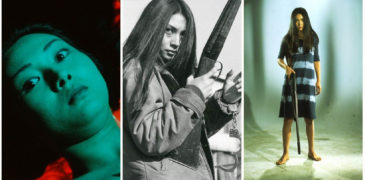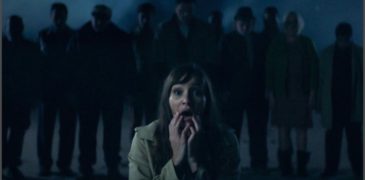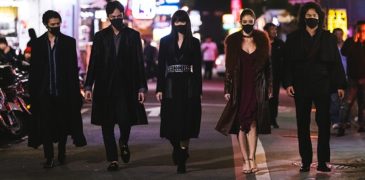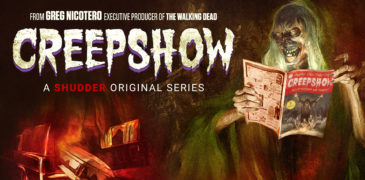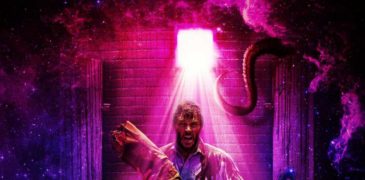
There’s an alluring quality that surrounds the link between horror and the queer community, from its roots in the 18th and 19th century with the emergence of queer coded Gothic fiction such as The Picture of Dorian Gray, to modern day portrayals of queer characters in text and film; horror has always been inextricably linked with queerness. You only need to dig even slightly under the surface of classic Gothic fiction to see that Jonathan Harker and Dracula engage in a seductive dance of homoeroticism. From this along with Doctor Frankenstein’s consuming obsession with creating the “perfect man”, you can begin to chronologically track the representation of the LGBTQ+ community within Gothic and horror.
Daniel Isn’t Real is no exception to that, and it stands out to me as joining the ranks of Jennifer’s Body and The Craft for its modern queer subtext, although it’s much more subtle than Jennifer Check’s sarcastic quips of “going both ways” and Nancy’s intense repellence of men. The film also grapples with themes of mental health and toxic masculinity, both of which seem to pervade throughout society currently and have a profound impact upon the queer community. It’s little wonder then, why those who are a part of the LGBTQ+ community seem to connect with horror on a profound and intimate level. Those who are a part of the community are no stranger to ostracism and “othering”–the stigma and isolation some characters encounter in horror are indicative of what many queer people experience.
Luke, the shy and socially withdrawn protagonist of Daniel Isn’t Real, feels that very isolation himself. The film starts with hints and references to familial mental health struggles, with his parents engaging in a heated argument as his Mum, Claire, screams that the “pills don’t help”. This undercurrent of mental health struggles heightens as the film progresses, with Luke’s trauma manifesting in the form of an invisible friend Daniel. This trauma stems from Luke witnessing the brutal murder-suicide at the hands of a young man in a café as an impressionable child, as soon as Luke witnesses the destruction and death this brings, Daniel mysteriously appears to comfort him.
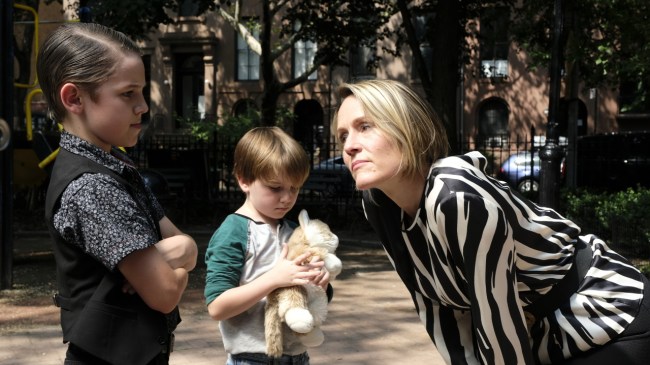
It soon becomes apparent that despite the close bond Luke and Daniel form, Daniel’s intentions with Luke are sinister and malicious, as he tries to lead Luke to an unsettling murderous conclusion. Shocked and appalled at her son’s actions, his now single mother forces Luke to banish Daniel into his doll house, never to be seen again…or so they hope.
As Luke grows up and joins college, his mother’s mental health issues appear to be exacerbated by her own isolation, with her house being a physical manifestation of her mental state. She is surrounded by book pages strewn across tables, taped onto walls and scratches deeply embedded into every possible surface. The audience already sees Luke as an insecure and malleable character with extreme trauma as a result of his childhood, and so we can’t help but wonder what his own mental health journey may be. Following an attempted suicide from Claire, Daniel conveniently reappears back into Luke’s life, ready to encroach upon his psyche and life like a malignant tumour. The audience is left wondering whether Daniel is a symptom of mental health issues? A figment of Luke’s imagination? An obsessive ghost? Or something even more forbidding and sinister…

Based upon the novel In This Way I Was Saved by Brian DeLeeuw, the director Adam Egypt Mortimer takes the original premise and runs with it, crediting iconic films such as Jacob’s Ladder, Requiem for a Dream, The Exorcist and Pan’s Labyrinth for his artistic inspiration. With such a smorgasbord of muses it’s clear to see how Mortimer was able to expertly craft such a joy-ride of a movie!
Fight Club is another inspiration for Daniel Isn’t Real, and the influence of Norton and Pitt’s characters feeding into intense toxic masculinity through the manipulative power Pitt has over Norton’s character is palpable in the ways Luke and Daniel interact with each other. Daniel is able to seduce Luke into what almost appear to be manic episodes, where all sense of rationalism are gone. These moments of seduction are always tinged with homoeroticism, with Daniel’s first appearance when Luke is a young adult literally being naked in a bath covered with rose petals.
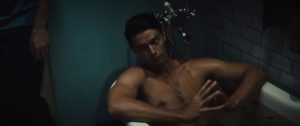
This seduction from Daniel comes to a head in the movie during the third act, when the tension and surprise are ramped up with a shocking twist! The twist in this film makes it stand out from recent horrors, and certainly could be interpreted as a better way of dealing with mental health, as we all know mental health portrayals haven’t always been sensitive, with it often being metaphorically demonised, and a crutch to lean cheap scares and resolutions on.
Daniel isn’t Real doesn’t use any such crutches, it stands proud and tall with its own merits and some stunning visuals to go along with it. The leading actors, Miles Robbins and Luke and Patrick Schwarzenegger may be nepotism babies, but they sure do put their money where their mouths are with their compelling performances. Their chemistry on screen is tangible and makes for the film being an exciting and fresh ride from start to finish. So, I hear you asking yourself what is the truth behind Daniel’s far-reaching, lecherous yet seductive fingers? And to this I say, that’s a question that can only be answered by fully immersing yourself in the ludicrous experience that is Daniel Isn’t Real.
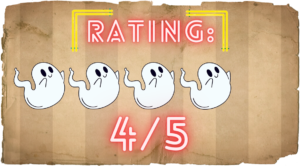
More From Shudder
The Prisoner Scorpion Movies Ranked
It’s hard to remember when the “women’s prison” subgenre was iconoclastic, given its popularity these days. But, before we had series like Orange is the New Black, Vis a Vis,…
Offseason (2022) Film Review: Wish We Weren’t Here
Offseason opens with grainy, nostalgic footage of beach holidays, set to a fairy tale musical score, before cutting sharply to a grey, desolate coastal shot, where cold waters meet unwelcoming…
Dead and Beautiful (2021) Film Review – The Decadent Undead
Many look to the upper echelons of society with a peculiar sense of awe, lives where money is no longer a concern is something that has drawn people into these…
Creepshow Season 2 (2021): Top 3 Episodes Ranked
The Creepshow anthology series came back with a bang for Season 2, with fresh explorations of the modern age of technology and current socio-political landscapes, along with the well-known and…
Revealer (2022) – A Shudder Original Review
A post-apocalyptic, 80’s nostalgia, comedy creature feature for the Stranger Things era! **Minor spoilers follow** If TV series such as Stranger Things and that one episode of Black Mirror has given…
Glorious (2022) Film Review – An Arterial Spray of Cosmic Horror
Fresh off its world premiere at Fantasia and coming exclusively to Shudder this week, director Rebekah McKendry’s new film Glorious is a mildly amusing slice of cosmic horror that does…
